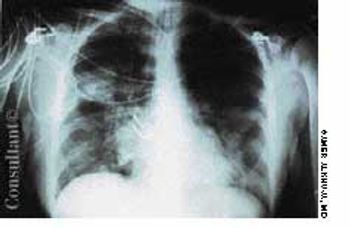
A 68-year-old white man complained of a painful "raw" lip that had gradually developed over several years. Multiple, discrete, small erosions were noted on the lower lip, some of which were covered with an adherent yellow scale/crust. Removal of the scale/crust led to bleeding. None of the involved areas were indurated; regional lymph nodes were normal.





